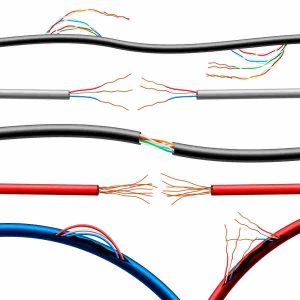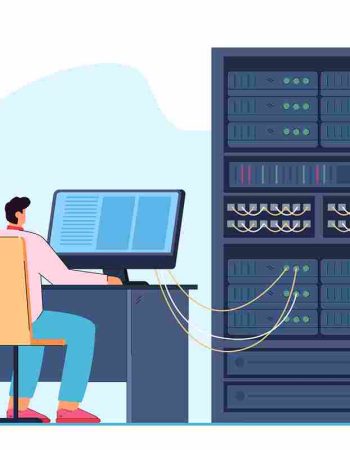In today’s hyper-connected world, the backbone of any organisation’s IT infrastructure is its network cabling. Often overlooked, the cabling system is integral to ensuring seamless communication, data transfer, and overall operational efficiency. Regular maintenance of network cabling is not just a good practice but a necessity. In this blog, we will delve into the critical reasons why consistent network cabling maintenance should be a priority for every organisation.

1. Understanding Network Cabling
Before diving into the importance of maintenance, it’s essential to understand what network cabling entails. Network cables are the physical pathways through which data is transmitted between computers, servers, and various other devices. The most common types include:
Twisted Pair Cables: Used in many Ethernet networks.
- Coaxial Cables: Common in cable television and early computer networks.
- Fiber Optic Cables: High-speed data transmission over long distances.
Each type has its unique characteristics and maintenance needs. However, the fundamental principles of regular checks and upkeep apply universally.
2. The Importance of Regular Maintenance
Ensuring Optimal Performance
Network performance is directly influenced by the quality and condition of the cabling infrastructure. Over time, cables can degrade due to wear and tear, environmental factors, or accidental damage. Regular maintenance helps in identifying and rectifying these issues promptly, ensuring that the network runs at optimal speeds and with minimal disruptions.
Minimising Downtime
Unexpected network failures can be catastrophic, leading to significant downtime and loss of productivity. By conducting regular inspections and maintenance, potential problems can be spotted and fixed before they escalate into major issues. This proactive approach minimizes the risk of unexpected outages, thereby ensuring continuous business operations.
Enhancing Security
Poorly maintained network cabling can be a security risk. Compromised cables can lead to data breaches, unauthorised access, and other security vulnerabilities. Regular maintenance includes checking for physical security issues such as exposed or damaged cables, ensuring that the network remains secure from potential threats.
Extending Lifespan of Equipment
Properly maintained cabling systems contribute to the longevity of networking equipment. Faulty or degraded cables can put additional strain on network devices, leading to premature failures. Regular maintenance helps in maintaining the integrity of the entire network, thus extending the lifespan of switches, routers, and other critical hardware.
Cost Savings
While regular maintenance requires an upfront investment of time and resources, it can lead to significant cost savings in the long run. Preventative maintenance is often much less expensive than emergency repairs. Moreover, it can prevent the need for costly equipment replacements and mitigate the financial impact of network downtimes.
Also Read: Future-proof your space: 6 Advantages of Network Cabling
3. Key Components of Network Cabling Maintenance
Effective network cabling maintenance involves several key components:
Routine Inspections
Regularly scheduled inspections are crucial. This includes checking for physical damage, ensuring proper connections, and verifying that cables are correctly labeled and organized. Using advanced tools, technicians can also test for signal degradation and other performance issues.
Documentation
Keeping detailed records of the cabling infrastructure is essential. This documentation should include maps of cable routes, types of cables used, connection points, and maintenance history. Accurate documentation aids in troubleshooting and makes future maintenance tasks more manageable.
Cleaning
Dust and debris can accumulate on and around network cables, particularly in server rooms and data centres. Regular cleaning of these areas helps in preventing overheating and maintaining optimal operating conditions for both cables and networking equipment.
Testing and Certification
Periodic testing and certification of network cables ensure that they meet industry standards and performance benchmarks. Tools such as cable testers can help in identifying issues like crosstalk, attenuation, and other signal quality problems.
Upgrading and Replacing
Technology evolves rapidly, and network cabling is no exception. Regular maintenance should also involve assessing when it is time to upgrade or replace outdated cabling to support higher data rates and new technologies.
4. Best Practices for Network Cabling Maintenance
To maximise the benefits of regular maintenance, organisations should adhere to the following best practices:
Develop a Maintenance Schedule
Create a comprehensive maintenance schedule that includes regular inspections, testing, and cleaning. Adhering to this schedule ensures that no aspect of the cabling system is overlooked.
Train Staff
Ensure that IT staff and network technicians are adequately trained in cabling maintenance best practices. Regular training sessions can help keep the team updated on the latest techniques and technologies.
Use Quality Materials
Invest in high-quality cabling and connectors. While this may have a higher initial cost, quality materials are more durable and reliable, reducing the need for frequent repairs and replacements.
5. Implement Cable Management Systems
Proper cable management solutions, such as racks, trays, and ties, can help in organising cables neatly and efficiently. This not only makes maintenance easier but also enhances airflow and reduces the risk of overheating.
Perform Regular Audits
Conducting periodic audits of the network cabling infrastructure helps in identifying areas that need improvement. These audits can reveal patterns of recurring issues, enabling more targeted and effective maintenance efforts.
Conclusion
In the digital age, where data is the lifeblood of business operations, maintaining a robust and reliable network cabling infrastructure is paramount. Regular network cabling maintenance ensures optimal performance, minimises downtime, enhances security, extends the lifespan of equipment, and leads to significant cost savings. By adopting a proactive approach and adhering to best practices, organisations can safeguard their network integrity and ensure seamless connectivity.
Investing in regular network cabling maintenance is not just a technical necessity but a strategic decision that supports the long-term success and efficiency of any organisation. Prioritise it, and your network will reward you with reliability and performance.






